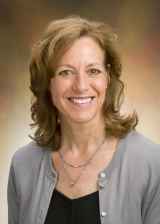Assessing the Relationship Between Physical Activity, Fatigue and Health Related Quality of Life in Children Receiving Cancer Treatment

Effects of treatment for childhood cancer can profoundly affect daily activities and quality of life for children and their families. By nature, children explore their lives through play and activity. Health changes that include pain, fatigue and loss of appetite experienced during cancer treatment can negatively affect children's ability to participate in activities.
This project will focus on children and adolescents with cancer between the ages of 5-17 years, to examine their levels of physical activity over a one week time period following the third cycle of chemotherapy. The relationship between activity levels, fatigue, and health related quality of life will be examined using questionnaires to measure level of fatigue and health related quality of life. To measure activity level, we will have the child wear an accelerometer daily for one week.
Physical activity is a powerful tool for healthy physical and psychosocial development in childhood. Sometimes well-meaning parents and family discourage children with cancer from activity for fear of infection, worsening fatigue, pain or injury. Evidence from studies related to physical activity in children with cancer indicate the effects of exercise show increased cardiopulmonary fitness, improved muscle strength, and reduced fatigue (Huang & Ness, 2011). Studies are needed to confirm these benefits in larger populations of children with cancer. Results of studies evaluating the effects of physical activity during childhood cancer treatment will allow for development of guidelines incorporating physical activity that will improve quality of life and lessen the risk for chronic illness in survivors of childhood cancer.
Project Update
Grantee: Pattianne Belfield, CRNP
Mentor: Wendy Hobbie, CRNP
What were you initially studying with your grant funded by ALSF?
I am a CRNP in a busy oncology/hematology satellite clinic for the Children’s Hospital of Philadelphia. In my clinical practice caring for children receiving treatment for oncology diagnoses, I often noticed that children who maintained an active lifestyle, i.e., continued to attend school, play sports and had physically active family lives had less nausea, fatigue and better health related quality of life (HRQOL) while they were on therapy than children who were less active. This project measures levels of physical activity (PA) over 7 days, levels of fatigue over the same 7 days and HRQOL. Physical activity will be measured directly using an actigraph. An additional incentive for the project are current survivorship research studies reporting that nearly 60% of young adults diagnosed with cancer during childhood in the U.S. remain sedentary, with associated weight gain, risk for cardiovascular disease, fatigue and reduced quality of life.
What have you found?
We are in the first year of a two year study, and still in the data collection phase. Once we have achieved our target goal of study patients, we will begin the process of data analysis and summarizing results. Thus far, children and families are very interested in participating in the study and are asking to be kept informed of the study results. Meeting families and introducing the study has provided an opportunity to talk with families about their levels of physical activity in general and during their child’s cancer therapy.
What does this mean for children with cancer and their families?
Specific aims include describing the level of physical activity of children and adolescents with cancer diagnoses and examining the relationship between PA, fatigue, and HRQOL. Understanding the relationship between PA, fatigue and HRQOL among childhood cancer patients will allow for the ability to provide patients with knowledge about the effects that cancer treatment on PA and create a plan to reduce adverse effects.
What are your next steps?
We need further studies looking at physical activity in children receiving cancer treatment. After this baseline study measuring physical activity in a small set of children on treatment, further studies can be randomized clinical trials offering exercise programs that may include dance, yoga or sports training while measuring HRQOL and fatigue for children on cancer therapy. I would love to see the outcome of these studies be the development of guidelines for physical activity in pediatric cancer patients for during and after treatment to improve their quality of life in survivorship.
Has this research been published?
I am looking forward to publishing this study on it’s completion.
What has this grant from ALSF allowed you to do that you wouldn't have been able to do otherwise?
The science of nursing is built on an evidence base practice where research is used every day to improve the care we give to our patients. As nurses in clinical practice, we frequently leave a patient exam room and say “now that would be a great nursing research question” but often don’t have the time to devote to that speculation or are too intimidated by the research process to forge out on our own without research support. The ALSF Nurse Researcher Workshop provided me with a review of the essential tools of nursing research and the ALSF grant writing process gave my ideas the forum they needed to become a reality. The ALSF grant outline provides the structure for a thoughtful review of literature, development of a solid study plan and analysis. The financial support of this grant allowed for the purchase of equipment, questionnaires, and support for study staff salary. Without the support of the grant, I would still be thinking that measuring physical activity while children are on treatment and having them answer questions about fatigue and HRQOL would make a great nursing research question.
Why did you choose to work in this field/on this topic?
Working with children and families with cancer is a challenging and rewarding job. Progress in treatments for childhood cancer has greatly improved cure rates, with 5-year survival now approaching 80%. This progress has not been without consequences and treatment related late effects. Impaired physical fitness has been reported during and after childhood cancer treatment, and can contribute to cardiac compromise and skeletal muscle atrophy and limit opportunities for participation in recreational activities and life roles that are dependent on physical fitness. As a nurse practitioner in oncology, I have the privilege of working with a team of experienced physicians, oncology nurses, social worker and support staff that provides expert, comprehensive care for children and adolescents with childhood cancer and blood disorders. Parents are the experts in their child’s care. Our oncology team teaches families how to be an expert in the care of their child receiving cancer treatment, and to minimize the short- and long-term adverse effects of this therapy. In addition to cancer symptom management and supportive care, I have a special interest in childhood development. Specifically, in maintaining a child’s developmental potential during treatment and beyond. Our focus in outpatient care is maintaining as much normalcy in family life as possible during this cancer therapy -- having children receive treatment while also being able to excel in school, sports and community activities as much as possible.
Mentoring
Wendy Hobbie and Beth Ely: What were the benefits of mentoring Pattianne and what activities were key?
Working with Pattianne, an expert clinician who has important insights into the needs of patients in her care, to help craft a research study answering a “burning” question from her practice and experience is rewarding. Partnering nurses with clinical and research expertise provides a unique opportunity to advance nursing science. Key mentoring activities included assistance with defining the research aims and identifying an appropriate method to obtain measurable outcomes to answer those aims. Additionally, helping Pattianne, as a novice researcher, navigate the research process at CHOP provided many opportunities for collaboration and clarification.
Pattianne Belfield: How did you benefit from being mentored during this project; what was most helpful?
I was very fortunate to have two expert nurse researchers be my mentors for this project. Wendy is recognized beyond our division as a nationwide leading nurse front runner in the field of childhood oncology survivorship research. She provided the inspiration and encouragement to apply for the workshop and write the grant. Her feedback from her experience in oncology research helped build the initial research question and study design. Beth was instrumental in clarifying the technical details of the research process, especially in planning for the study’s statistical analysis. She also provided hands on support in the intimidating navigation through our institutional IRB process. I would not have been able to submit the grant or have the honor of being funded by ALSF without both of their support.

